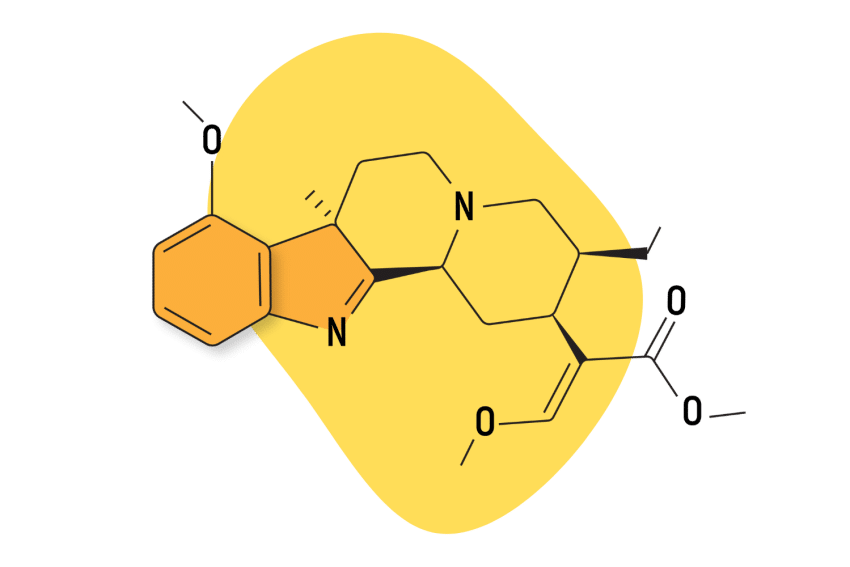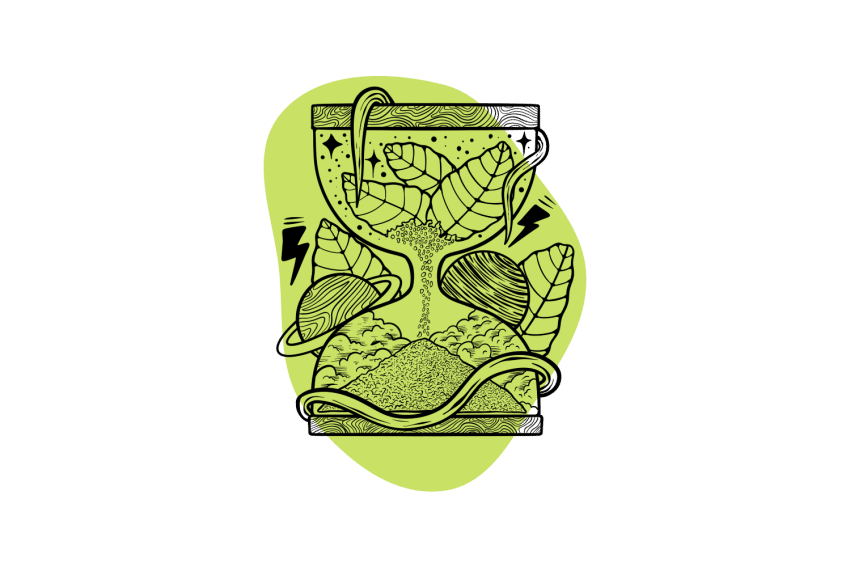How Many Kratom Capsules Does It Take to Get the Effects You Want?
Capsules help you avoid kratom’s taste, but you still have to figure out how many to take — which can be a somewhat tricky endeavor.

All kratom has the same alkaloids, but the percentages vary, which changes the effects — dramatically.
Strain selection and the quality of the kratom matter, too — but the dosage is, by far, the biggest factor in terms of the resulting effects.
This guide will walk you through how kratom dosage works with capsules, how many you should take, and their pros and cons.
How Many Kratom Capsules? Depends What You’re After
First, the bad news — kratom’s effects are dose-dependent, so the amount you take determines how you feel.
More bad news — the dosage and effects are highly personal, and what works for one person won’t work for another.
But don’t worry, there’s also good news. Kratom is very forgiving and well-tolerated; worst-case scenario, you’ll either throw up or have a very underwhelming experience — as long as you follow basic safety rules.
Also, there are general guidelines to start you off, whether you’re using powder or capsules:
- Low dose — 2-4 grams
- Medium dose — 4-6 grams
- Large dose — 6-8 grams
- Heavy dose — 8+ grams
Capsules are kratom powder packed in a gelatin shell (or vegan version). Most come in size 00 with about 750 mg of powder. Sometimes, you’ll find 000 capsules with 1 gram. The larger ones hold more, so you can take fewer of them, but they can be difficult to swallow.
Kratom Capsule Dosage & Effect Chart
Kratom’s alkaloids act on adrenergic, dopamine, serotonin, and opioid receptors, allowing it to possess a host of therapeutic benefits.
Smaller doses are more energizing, while larger ones are sedating. The more you take, the more the alkaloid 7-hydroxymitragynine — the more potent opioid-receptor agonist — starts to drown out the effects of the other main alkaloid — mitragynine.
This chart gives you an idea of where to start for each effect:
| Effects | Powder Dose | 00 Capsule Dose |
| Energy Boost | 1-4 grams | 1-5 capsules |
| Mood Support | 2-5 grams | 2-6 capsules |
| Anxiety Relief | 3-7 grams | 4-9 capsules |
| Pain Relief | 5-12 grams | 6-16 capsules |
Kratom Capsules: The Good & the Bad
People love capsules because of their convenience. However, while capsules cut down on the hassle, they have some drawbacks.
Here’s a list of the pros and cons so you can weigh your options:
Pros:
- Compact
- Easy to transport
- You don’t have to weigh powder
- No kratom taste
Cons:
- Expensive
- Less accurate dosing
- Can be hard to swallow
Kratom Strains & How They Affect Dosage
You’re not done yet. Next, we need to cover the different strains. These also play a part in the effects you’ll get.
Kratom strains are just variations of the same plant, Mitragyna speciosa. Certain factors, like growing conditions and post-harvest processing, cause differences in the alkaloid content, which leads to varying effects. It’s essential to know the strains and what to use them for so you’re not surprised by the outcome.
White Strains
White kratom strains are higher in the mitragynine, which has both psychostimulant and opioid-like properties. Some research suggests it acts similarly to the coca plant, though only to a small degree, as these effects seem to be mediated by its activity at the ku-opioid receptor [1].
Red Strains
Red kratom strains are at the other end of the spectrum — sedation. They contain higher amounts of 7-hydroxymitragynine, a strong mu-opioid receptor agonist [2]. Research shows it can be more potent than morphine, though these effects are limited by the other alkaloids and its minimal presence [3].
Green Strains
Green kratom strains are more middle-of-the-road — neither too sedating nor stimulating. These have a balanced alkaloid level and provide a little bit of everything.
Use these if you need energy but struggle with anxiety or want mild to moderate pain relief but need to stay alert.
Kratom: The Plant With Many Uses
Kratom (Mitragyna speciosa) is a tree from Southeast Asia that has been used for hundreds of years. Its alkaloids interact with multiple systems — serotonin, adrenergic, opioid, and dopamine — which is why it has such a wide array of uses, some contradictory. Here are the most common [4,5].
Opioid & Other Addictions
Kratom is an atypical opioid, meaning it’s an opioid-receptor agonist but also acts on other systems. This trait makes it safer but allows it to be an excellent replacement for opioids when trying to wean off of them [6]. Many people have been able to break their addictions thanks to kratom.
Talk to your doctor first if you want to use kratom to help overcome withdrawal symptoms. It usually requires high doses of red strains to get the necessary comfort.
Pain
Kratom might not beat out prescription opioids, but plenty of people have made the switch and find the relief from it to be more than adequate. Its safety profile makes it even better.
Use higher doses of red strains to treat moderate to severe pain.
Energy
Some of kratom’s alkaloids act on the adrenergic system, influencing adrenaline — think fight or flight.
When looking for energy, concentration, creativity, and motivation, stick with small doses and white strains. Most green strains will also work, but they tend to be milder.
Insomnia
The same reason kratom is good for pain is also why it’s so helpful for insomnia. Slowing the central nervous system (CNS) helps you relax and fall asleep quicker. Choose red strains and larger doses for this purpose.
Anxiety & Depression
Again, kratom’s effects on the CNS allow it to calm anxiety. However, it can also cause anxiety, so be careful with the strains you use. Whites tend to amp up anxiety levels since they’re more stimulating, while reds act as an anxiolytic.
Kratom can also help with depression since it provides feelings of euphoria. Any strain can provide this, but white and green strains are usually better for mood [7].

Kratom Capsules: Side Effects & Risks
As I mentioned, kratom is quite safe as long as you know how to use it properly — it has few side effects, there’s very little chance of overdosing, and even though it’s addictive, it’s not anything like an opioid addiction.
1. Side Effects
Common side effects of kratom include nausea, vomiting, headaches, dizziness, dehydration, anxiety, and irritability — but these are not typical with low doses. The bigger the amount, the more likely you will experience adverse effects.
If you find yourself not feeling well after taking kratom, try lowering your dose next time.
Long-term side effects are lesser known, but kratom could cause liver, kidney, or heart problems, so keep this in mind if you have pre-existing conditions.
2. Addiction
You’ve probably heard about kratom in the news, but not in a positive way. Unfortunately, many people have a bad opinion of it thanks to false information. This is also why some places have outlawed it.
The truth is kratom is addictive, but it takes a lot to get to that point — usually very high doses over a long period of time. But even then, many people use it for severe pain and never become dependent.
Withdrawal from kratom is also far less severe than opioid or alcohol withdrawal. Symptoms are similar but generally manageable — most people can go about their daily lives [8].
3. Drug Interactions
When you hear a kratom horror story, stop and look at the facts. Most cases of “kratom overdose” involve other, more dangerous drugs, like fentanyl or other opioids, cocaine, amphetamines, or benzodiazepines.
Kratom, on its own, rarely causes serious health problems or death.
However, it does make other substances more dangerous. Kratom is metabolized by the enzyme CYP450, which also takes care of many medications and drugs. If you take prescription or illicit drugs, never use kratom until you talk to your doctor [9].
4. Adulterated or Low-Quality Products
Kratom isn’t federally regulated in the US, and most other countries have few laws regarding it. For this reason, you need to research the company before buying kratom. Adulterated or contaminated kratom can slip through and make you sick or worse.
Look for companies that test their kratom through third-party labs. This shows they take kratom seriously and allows you to see the alkaloid content and anything that shouldn’t be there.
Also, check out customer reviews for unbiased opinions.
FAQ: Kratom Capsules
1. What other ways can I take kratom?
If you don’t want to use capsules, buy the kratom powder and drink it in tea, cook with it, or dry scoop it (called toss-and-wash in the kratom world).
Kratom has a bitter, earthy taste that can be hard to swallow, but adding lemon or mixing it with juice can help.
2. Where does kratom come from?
Kratom comes from the Mitragyna speciosa tree in Southeast Asia, where it grows naturally. Farmers harvest the leaves, then dry and crush them or grind them into a fine powder. This is then sold to vendors around the world.
3. Where is kratom illegal?
Kratom is mostly unregulated, but some places have banned it, some even making it a Schedule 1 drug. Because laws can change quickly, your best bet is to check your local laws and stay up-to-date on any possible changes.
References
- Harun, N., Hassan, Z., Navaratnam, V., Mansor, S. M., & Shoaib, M. (2015). Discriminative stimulus properties of mitragynine (kratom) in rats. Psychopharmacology, 232, 2227-2238.
- Obeng, S., Wilkerson, J. L., León, F., Reeves, M. E., Restrepo, L. F., Gamez-Jimenez, L. R., … & Hiranita, T. (2021). Pharmacological comparison of mitragynine and 7-hydroxymitragynine: in vitro affinity and efficacy for μ-opioid receptor and opioid-like behavioral effects in rats. Journal of Pharmacology and Experimental Therapeutics, 376(3), 410-427.
- Hiranita, T., Sharma, A., Oyola, F. L., Obeng, S., Reeves, M. E., Restrepo, L. F., … & McMahon, L. R. (2020). Potential contribution of 7‐hydroxymitragynine, a metabolite of the primary kratom (Mitragyna speciosa) alkaloid mitragynine, to the μ‐opioid activity of mitragynine in rats. The FASEB Journal, 34(S1), 1-1.
- Prevete, E., Kuypers, K. P. C., Theunissen, E. L., Corazza, O., Bersani, G., & Ramaekers, J. G. (2022). A systematic review of (pre) clinical studies on the therapeutic potential and safety profile of kratom in humans. Human Psychopharmacology: Clinical and Experimental, 37(1), e2805.
- Hanapi, N. A., Chear, N. J. Y., Azizi, J., & Yusof, S. R. (2021). Kratom alkaloids: Interactions with enzymes, receptors, and cellular barriers. Frontiers in Pharmacology, 12, 751656.
- Wilson, L. L., Chakraborty, S., Eans, S. O., Cirino, T. J., Stacy, H. M., Simons, C. A., … & McLaughlin, J. P. (2021). Kratom alkaloids, natural and semi-synthetic, show less physical dependence and ameliorate opioid withdrawal. Cellular and molecular neurobiology, 41, 1131-1143.
- León, F., Obeng, S., Mottinelli, M., Chen, Y., King, T. I., Berthold, E. C., … & McCurdy, C. R. (2021). Activity of Mitragyna speciosa (“kratom”) alkaloids at serotonin receptors. Journal of medicinal chemistry, 64(18), 13510-13523.
- Prevete, E., Kuypers, K. P. C., Theunissen, E. L., Esposito, G., Ramaekers, J. G., Pasquini, M., & Corazza, O. (2023). Clinical Implications of Kratom (Mitragyna speciosa) Use: A Literature Review. Current Addiction Reports, 1-18.
- Kamble, S. H., Sharma, A., King, T. I., Berthold, E. C., León, F., Meyer, P. K. L., … & Avery, B. A. (2020). Exploration of cytochrome P450 inhibition mediated drug-drug interaction potential of kratom alkaloids. Toxicology letters, 319, 148-154.







